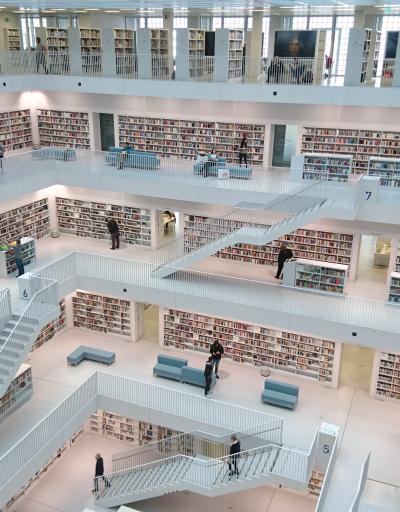
Shutterstock
Girls' science camp

Where
Malawi
Malawi
When
2020
2020
Who
Malawi university of science and technology (must)
Malawi university of science and technology (must)
Website of the policy/measure
Website
Website
Read the full report
Go to full report
Go to full report
Description of the policy/measure
The girls’ science camp initiative which has been running for the past four years (since 2016) brings together secondary school girls in forms 1 to 3 across the country to (must) for a period of two weeks. in 2017 the camp attracted participants from different countries including the united states of america, zambia, tanzania, liberia, rwanda, uganda and the host, malawi. the girls’ science camp aims at motivating and inspiring girls to appreciate and improve their performance in science and technology from both the western and indigenous scientific fields and later make careers in the related fields. in addition to motivational talks and career guidance from role models in related fields, the girls are also exposed to lectures conducted by acclaimed experts from different fields. the participants also get hands-on experience in using state of the art science and technology facilities on campus to come up with various scientific projects, and given a feel of university life. they are also given time to engage in sporting activities, cultural exchange evening during which the community around must is engaged in traditional dances, visits to industry and excursions. the bingu school of culture and heritage (bisch) which is one of the four schools comprising must takes this opportunity to showcase and train the girls in some of the indigenous science and technologies in the fields of painting and drawing; and musicology. this provides a very good platform for the expression of cultural diversity among the participants thereby aiding the implementation of the 2005 unesco convention. in painting and drawing, the participants were introduced to the basics of painting and drawing as an art. thus, the girls, were exposed to the foundation knowledge and skills needed to understand, apply and communicate, the conceptual, technical and aesthetic factors used in drawing and painting within a cultural context with emphasis on indigenous themes. a series of exercises and hands-on projects covering: colour mixing, paint application, achieving of texture and atmospheres in painting were undertaken by the girls. finally, an exhibition of their projects was carried out. during cultural exchange evening, the participants showcase their talents and skills in music and dances. it is an entertaining and educative evening where traditional music and dances from different parts of the country and from different cultures are expressed. the community around must is invited to perform their lomwe traditional dances. this is one of the moments where the diversity of cultural expression is displayed by the girls and the community members. apart from traditional music and dances, poems and other cultural creative activities are displayed. part of the motivation talks emphases on the importance of adhering to cultural values as part of their future university life. thus, the girls are encouraged to remain morally upright and respect the cultures of other people from different background for peaceful coexistence. they are also advised to respect the culture of the community around their university to be. the girls’ science camp manages to integrate cultural and creative activities within the science and technology field. this demonstrates that, culture can be used to express science thereby aiding the diversity of cultural expression. eventually, the girls’ science camp leads to the attainment of sdgs 4 (quality education), 5 (gender equality), 8 (decent work and economic growth) and 17 (partnership for the goals).
2005 Convention Monitoring Framework Goal(s)
Area(s) of Monitoring
Cultural Domain(s)
Transversal Priority(ies)
This measure was reported by civil societyResults achieved
Since its inception in 2016, the girls’ science camp has achieved a number of results and it is due to its successful story that it has been going for the past four conservative years. some of the results include the following: i. it has trained over 400 girls (about 120 each year) in the basics of the art of painting and drawing as an indigenous science. this has led to a growing awareness about the cultural programs within bisch and more girls applying for the programs after finishing their form 4. i. it has exposed over 400 girls to the relevance and broadness of culture in expressing different human conditions. thus, science can be expressed through culture thereby enabling the two to engage in a win-win dialogue. most girls who have gone through the science camp although they are in mainstream science subjects are morally upright because they are able to balance between their academic life and moral/ethical life. ii. it has led to a mind-set change on how indigenous technologies can complement western science thereby promoting diversity of cultural expression between western and indigenous science and technologies. iii. the girls’ science camp through the cultural exchange evening, excursions and motivational talks has managed to expose over 400 girls to different cultures found within malawi and beyond. through this exposure, the girls have developed a sense of respect and appreciation of other people’s cultures thereby promoting the diversity of cultural expression. iv. the girls’ science camp has successfully improved the performance of girls in science subjects which in most cases are dominated by boys. as already alluded to, this has been the case due to the change in mind-set over science subjects and the role of culture in expressing science.


